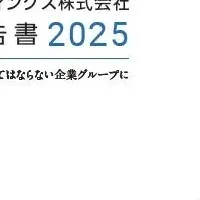
Robotics System Integration Market Set for Major Growth Driven by APAC Region
Understanding the Surge in Robotics System Integration Market
The global robotics system integration market is anticipated to witness impressive growth in the coming years, with a projected increase of USD 6.18 billion between 2025 and 2029, according to research by Technavio. This growth trajectory indicates a robust compound annual growth rate (CAGR) of over 10.7%, underscoring the demand for advanced robotic solutions in various sectors.
Market Overview
Robotics system integration encompasses the unification of industrial robots and accompanying technology to create cohesive automation frameworks in manufacturing and other industries. This integration not only optimizes operational efficiency but also lowers costs associated with manual labor. The market is broadly segmented by application, including material handling, welding, assembly lines, and various other tasks, as well as by industry sectors such as electronics, automotive, healthcare, and aerospace.
Of particular note is the Asia-Pacific (APAC) region, which is expected to contribute a staggering 48% to the overall market growth. Countries like Japan, China, South Korea, Taiwan, and India emerge as instrumental players, acting as crucial hubs for robotics manufacturers. These nations benefit from a combination of favorable government policies, rising investments in manufacturing, and a strong demand for automated solutions across numerous industries.
Drivers of Growth
Several factors are propelling the growth of the robotics system integration sector:
1. Increased Automation Needs: Businesses are increasingly looking to automate processes to enhance efficiency, reduce errors, and cope with the pressures of rising labor costs. This trend is notably prevalent in the automotive, food and beverage, and logistics sectors.
2. Technological Advancements: Innovations in AI, machine learning, and IoT are making robotic systems more accessible and versatile. Modern robots can perform complex tasks with precision, adapting to varying operational needs.
3. Labor Shortages: The ongoing struggle to find skilled labor has pushed companies to look for automation as a viable alternative, particularly in industries such as food processing and pharmaceuticals where consistency and speed are crucial.
Key Applications
Among the various applications within the market, material handling represents one of the fastest-growing segments. Robots excel in this area by performing tasks such as sorting, packing, and transporting goods, minimizing human involvement and the associated risks.
In automotive manufacturing, for instance, the application of robotics for bulk payload movement is increasing as manufacturers seek to enhance production rates while ensuring safety. Similarly, sectors like chemicals and electronics are rapidly integrating robotics to handle hazardous materials and streamline production workflows, respectively.
Companies like Coop have set a precedent in the food sector by automating processes such as warehousing and distribution, responding effectively to labor shortages and consumer demands for faster service.
The Competitive Landscape
Leading firms in the robotics system integration market, such as Amtec Solutions Group, CNC Robotics Ltd., and Hitachi Ltd., are intensifying their efforts in research and development to innovate and improve their offerings. These companies are not only creating advanced robotics solutions but are also focusing on integration services, ensuring a seamless fit between robots and existing infrastructure.
Future Outlook
The future of the robotics system integration market appears bright, buoyed by advancements in technology and the pressing need for automation across industries. As the demand for efficient and flexible operational solutions rises, stakeholders ranging from manufacturers to technology providers will have lucrative opportunities to capitalize on this growth trend.
In conclusion, with a strong forecast indicating substantial growth, the robotics system integration market is poised to become a cornerstone of modern manufacturing and service industries. As APAC leads the charge, global players must adopt proactive measures to harness the potential of automated solutions effectively.
Topics Business Technology)










【About Using Articles】
You can freely use the title and article content by linking to the page where the article is posted.
※ Images cannot be used.
【About Links】
Links are free to use.